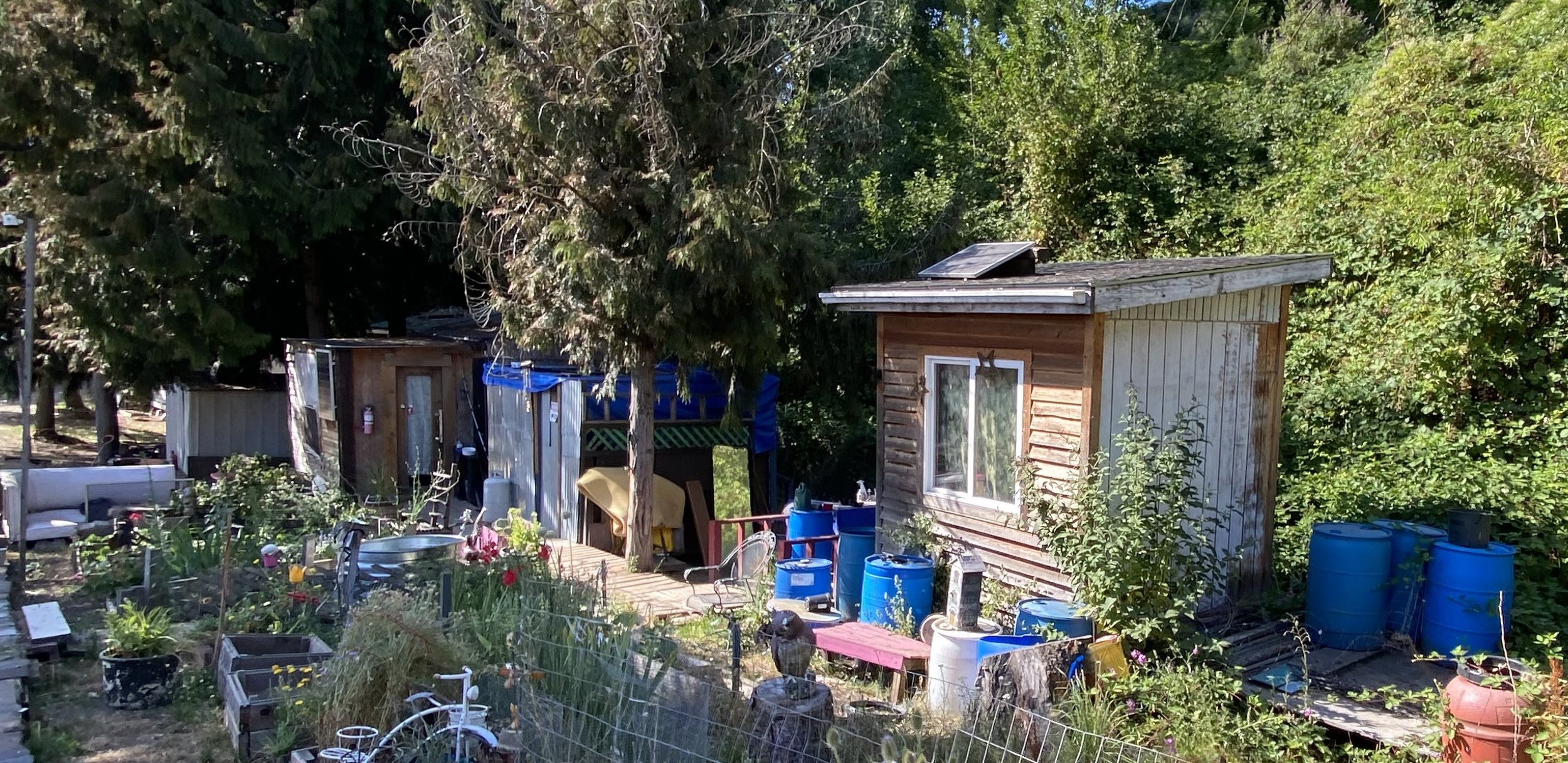
What We Aim to Achieve
Hazelnut Grove in North Portland is an off-the-grid, self-managed and thriving alternative shelter community receiving nominal city funded support. Shelter Now supports Hazelnut Grove through advocacy and networking. Photo credit: Sean Green
Portland's most urgent challenge is the humanitarian crisis of well over 5,000 people (and growing) living on its streets. Historic racial, economic, and social disparities, combined with COVID-19, have worsened this problem, with BIPOC and other marginalized populations disproportionately impacted.
By amplifying the voices of our unhoused neighbors, we can shift Portland's housing narrative while advancing housing responses that reach more people more quickly and provide dignity, self-determination, stability, reliable access to services, and the rehabilitating experience of community.
Portland has been home to innovative housing options with a strong track record of success, based on the perspective of residents, actual outcomes, and cost effectiveness. Yet some of these options have not been universally considered valid or a priority by those in power positions. Shelter Now asserts that it is imperative to protect Portland's future affordable housing prospects by implementing a true housing continuum and system of care that addresses diverse needs.
While the community generally agrees that a dramatic increase in affordable housing represents the long-term solution, the most optimistic projections place sufficient availability as years away, and lack of funding could push it out even further. Without consistent advancement of a broad continuum of options, the problem may morph into greater trauma and the public's withdrawal of support.
Shelter Now formed to advance innovative options that are more broadly responsive to Portland's houselessness crisis. These options add more flexible, cost-effective, and NOW-driven strategies, and that better prepare people to live successfully in permanent housing.
Today, there is exciting momentum to significantly expand alternative shelter, but much work remains in the years ahead to site, establish, operate, and improve the quality, quantity, and diversity of options. Shelter Now reflects the necessary cross-sector network to ensure this work advances. We must stay actively engaged in multiple initiatives, to ensure outcomes for our houseless neighbors, through efforts to:
monitor for efficient and effective implementation of current policy and investments, and ensure ongoing investment
ensure the perspectives of those with lived experience are centered
advocate for and support culturally-specific and other options focused on serving marginalized communities
encourage alternative shelter sites to be managed with a focus on self-determination and inclusion
engage with neighborhoods to ensure good neighbor agreements and help them access mediation or other support
support ongoing tracking and learning about what’s working and how to address challenges
identify and support opportunities to improve the system of care
Our Strategies
To improve the lives of our unhoused neighbors by expanding alternative shelter options now, our three primary strategies and intended impacts are:
Strengthen Policies and Investments so that
Alternative shelter is prioritized in city and county initiatives, with public and private investments growing.
A range of innovative options will be implemented to increase the quantity, diversity, and quality of housing options.
Development of alternatives will be driven by the needs of people with lived experience, and prioritize safety, security, self-determination, community, and equity.
We will see an exponential increase of people choosing and living successfully in alternatives housing options.
Grow Community Support so that
Greater understanding evolves of the needs and priorities of unhoused community members.
Alternative shelter takes its rightful place on the expanding continuum of housing options, and a broader definition of "housing" emerges.
Political and public support for diverse solutions to meet diverse needs grows strong and deliberate, leading to more sites and sustainability of those sites.
Improve the System of Care so that
Government, providers, and people with lived experience of houselessness come together to identify needed improvements.
Interagency continuous improvement commitments and programs are developed to support people seamlessly.
Systems improvements explicitly and intentionally address racial and other inequities and disparities.
What We Do
To achieve our intended impacts, Shelter Now has identified five key roles for our network:
Amplify the voices of people with lived experience
Reduce barriers to participation in public processes
Support people with lived experience to share their perspectives and stories
Provide a platform for broadcasting those perspectives
Advocate with policy makers on policy, budget, and implementation plans
Build relationships for the long-haul
Offer information, resources, and partnership where appropriate
Maintain strong presence in decision-making committees and meetings
Track and hold policy-makers (and others) accountable for results
Promote community engagement and learning
Convene partners to build community, learn, and share knowledge
Develop communications to counter myths and shift narratives
Connect unhoused and housed neighbors to promote good neighbor culture
Elevate visibility of community efforts
Build bridges and foster collaborative action
Connect partners to strengthen collaboration across the network
Identify shared priorities for collective action and systems change
Provide support in coordinating strategic action
Leverage and mobilize resources
Identify and pursue funding opportunities for the field
Build funding partnerships across sectors
Help build capacity for collaborative fund development in the field
